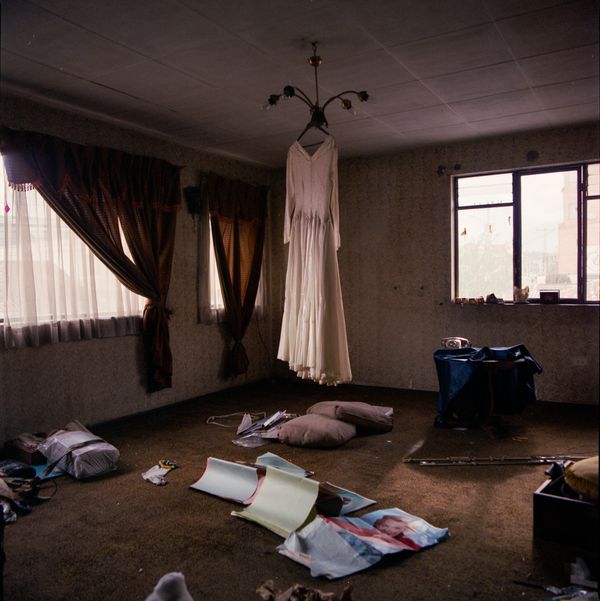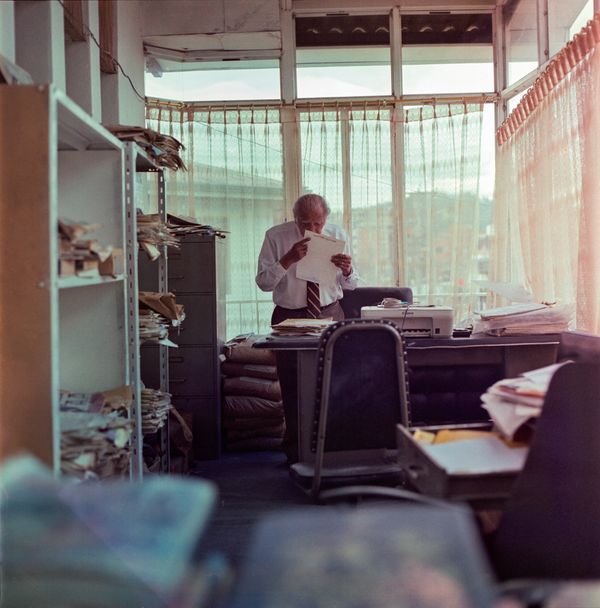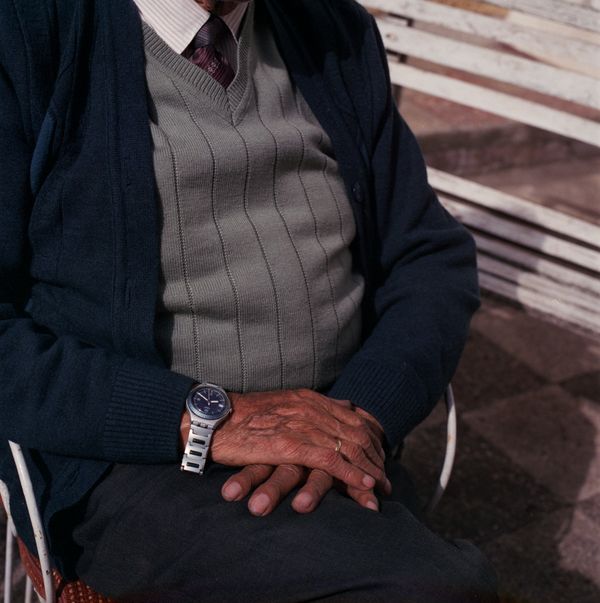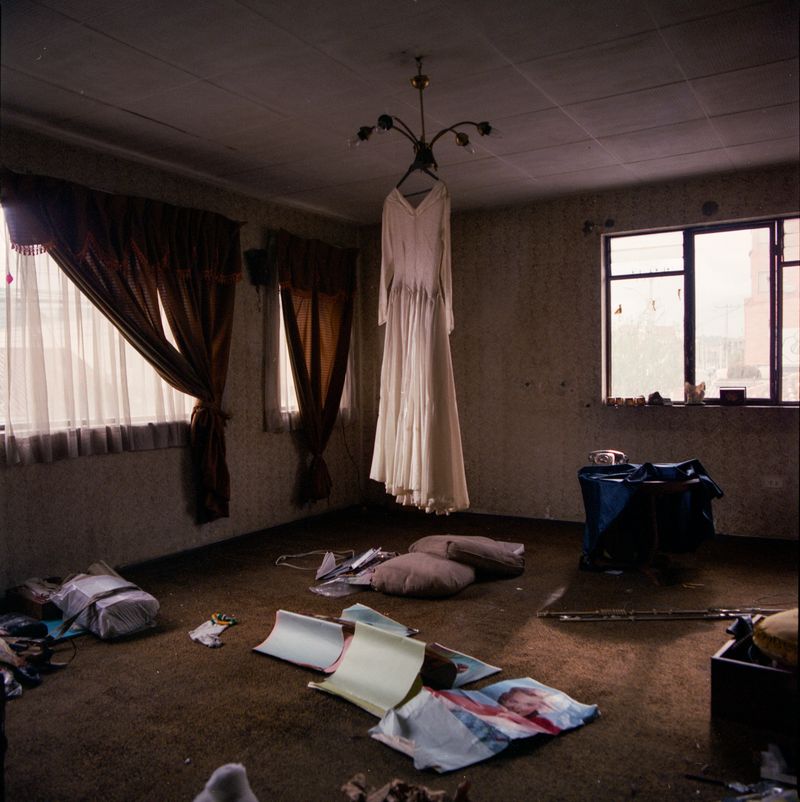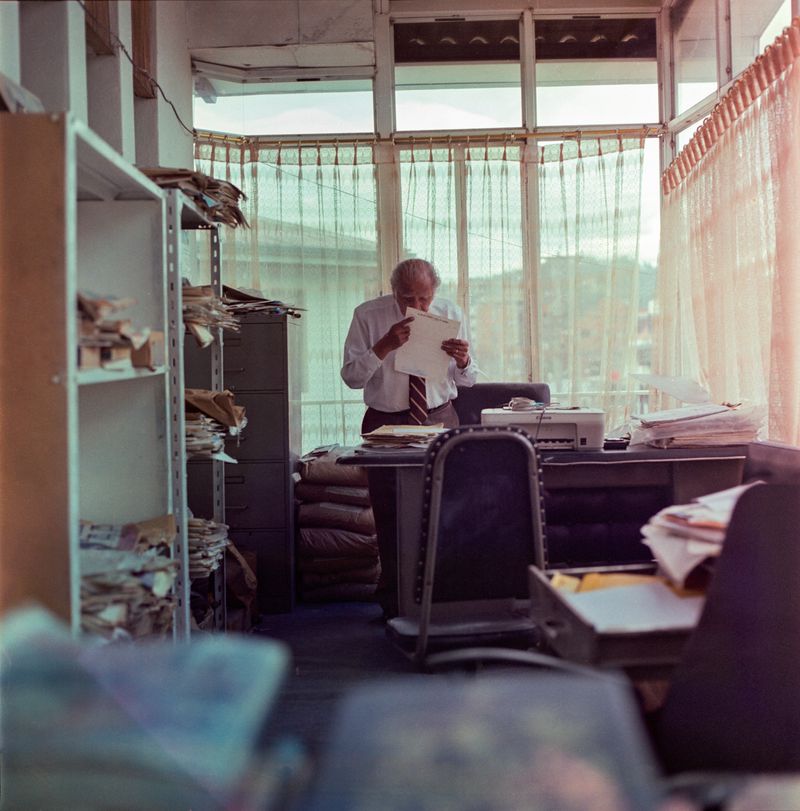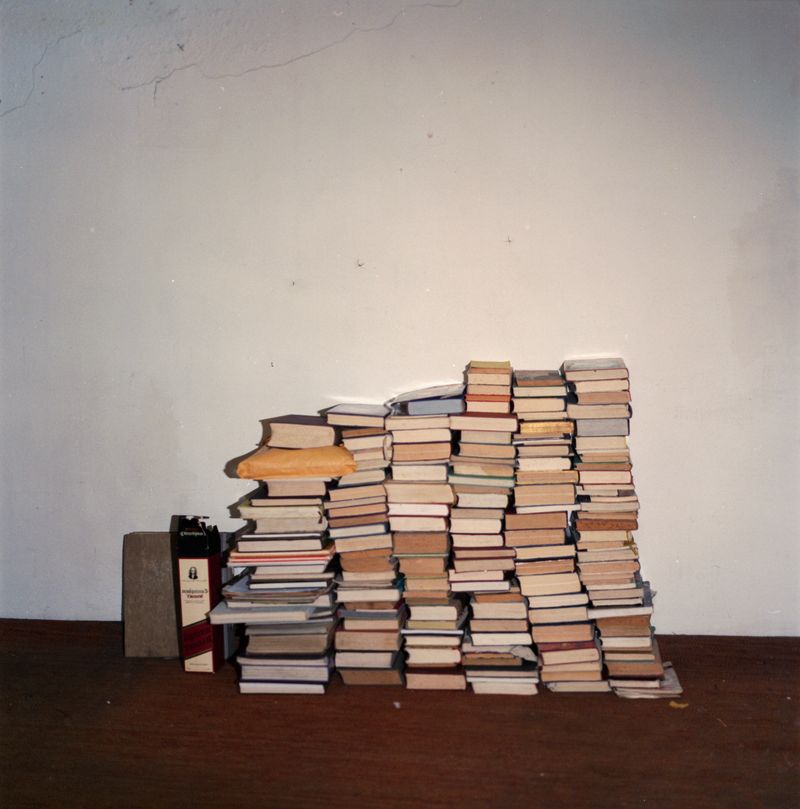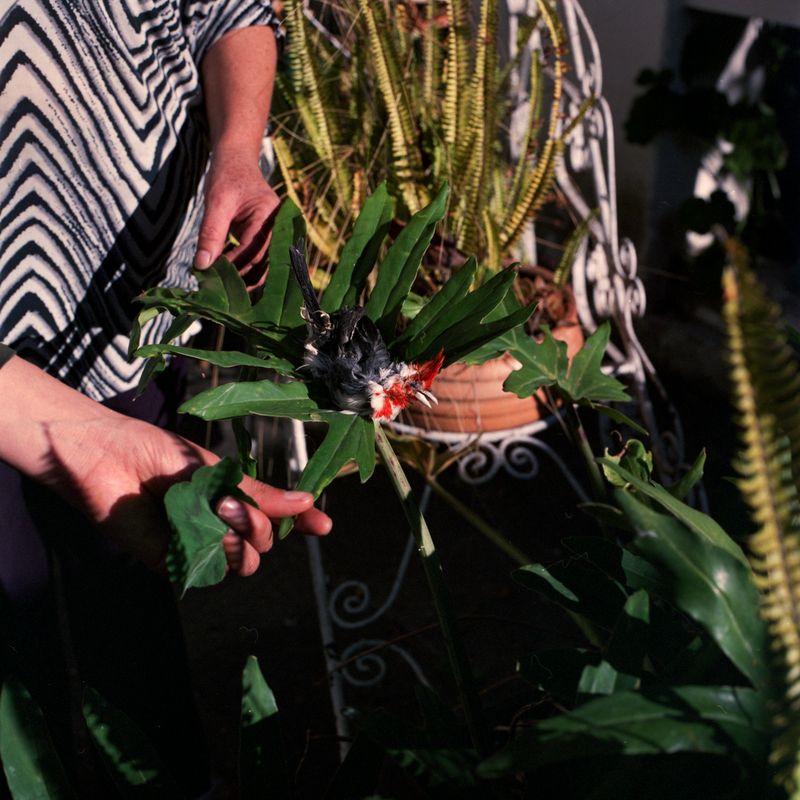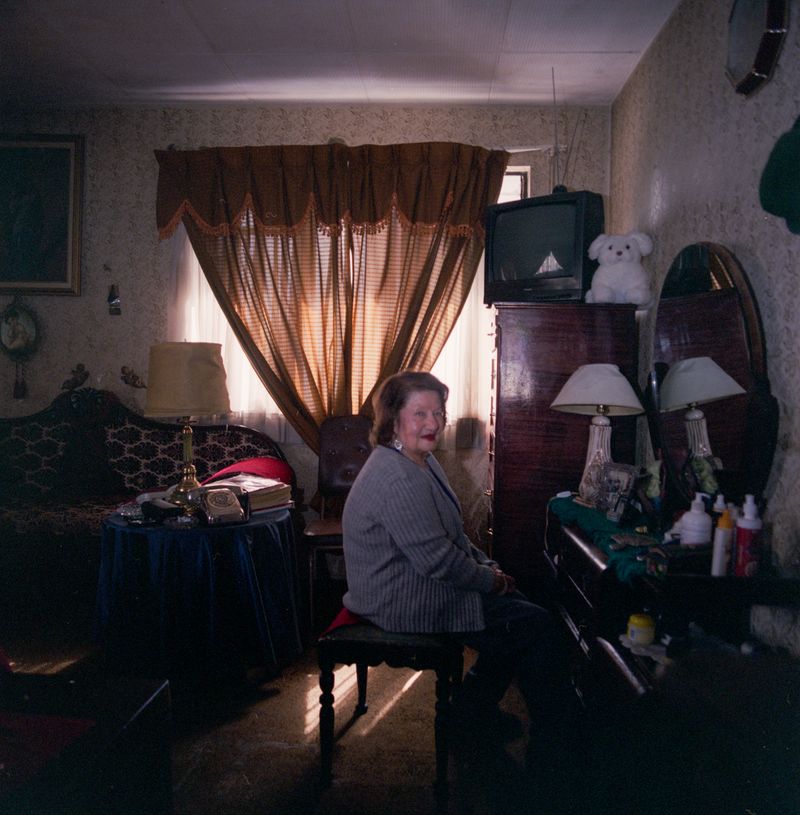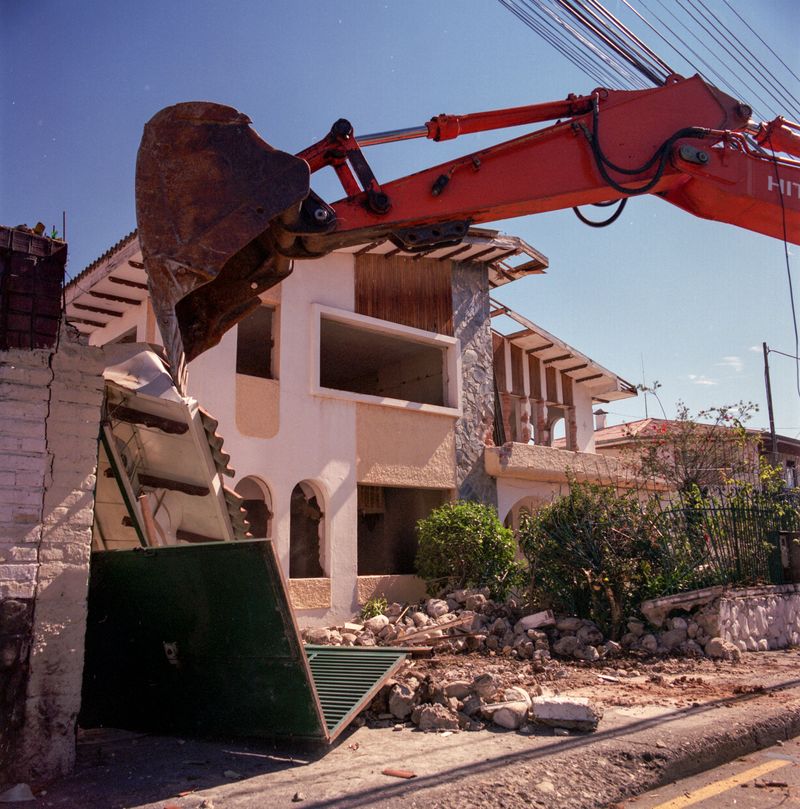A Radiating Home by Humming Birds and Blue Dust
-
Published15 Dec 2021
-
Author
When did you begin to work on this series? Did you begin to photograph from the moment you knew the house was for sale?
No, I started to work on this series since I returned to Ecuador, after having lived outside the country for about 3 years. It was 2016, at the beginning I just went to visit my grandparents, as I was used to, but this time taking the camera with me. I was always the photographer for my family, capturing family’s parties, events and meetings. During this time, I realised I began to find poetry, memories and stories during conversations with my grandparents in the house, and the conversations were often around the construction of the house, the garden, the objects and the space. So, I decided to continue this photographic process while visiting them.
How did you emotionally separate the nostalgia to the present while you were photographing?
Well, I learned I couldn’t separate emotionally, at the beginning I was always listening, sharing food, talking and enjoying the company of my grandparents, but little by little I noticed all the conflicts that economic crisis was unveiling, so every time I went to the house I returned to my house a little bit emotionally broken. Yet, not everything was sad, despite the crisis my grandparents went to the garden every day to sunbath and my grandmother continue to fix nicely their house and their garden and to cook every day, they were always together. That gave me strength and when they decided to sell the house I also felt that it was the solution for them even though all the emotional weight it represented.
How was the emotional rollercoaster of photographing while the house was getting emptier and emptier? You must have photographed a lot - how have you edited out this process?
It was a very slow process; the house of my grandparents was always covered with a sad veil – personally I describe it this way. Sadly, my grandmother lost two sons and a daughter, and their memories were always wandering around. I saw her late children through objects, clothes, photographs… My grandmother could never get over their deaths, and from that, the house became her refuge, she hardly ever went out. I photographed in a very slow and patient way, I was always helping to cook, to fix the table, the garden, and when the house was getting emptier, I was packing as well. It was very hard for my grandparents to actually leave the house, everything was empty, and their room was still intact, so I also went to help my grandmother to pack her treasures… On the other hand, my grandfather has always been harder, even though I saw him crying and trembling because for a person of his age, 92 at the time, it was overwhelming to face such a drastic change. I had to be strong to support them.
I did photograph a lot and I recognise that many of the photographs were not strong, so I edited with the support of Gisela Volá, who helped me finding a more poetic way to show the feeling of mourning, which I was going through at that time, because my grandmother passed away in 2020, when she was 88 years old with cancer, 6 months after moving to the new house. We realised that the series was about mourning and about something mysterious that involved love, birds, death and gold.
Fer, I am very intrigued by the photos of the hummingbird, could you share what's the story behind it?
My grandmother always had a fascination with birds, she has had a parakeet, a toucan, a woodpecker, among other birds. She knew the hour when sparrows and black birds came to bath and eat the bread she put to them in her garden, she counted the hummingbirds that ate of her flowers every day, she was amazed by all that. Since I started the project many of her already old birds started to pass away as well, the last one was the wood pecker just before the house was demolished. She buried them all in the garden. One day a dead hummingbird was found amongst curtains in the house, it was intact, the sun kept its body like that. Since that bird appeared, I felt and thought the death birds were a symbol of death. In the story, I believe, they represent the family members who are no longer with us.
The title of the series is so poetic, could you tell us more on the choice as well as explain though on the blue illustration you have elaborated?
As I told you the title has changed - When the house turned into indigo blue dust - I decided to name it around indigo blue pigment that was given to me by my grandfather. I thought it was very significant for me to talk about the dreams of an old person. My grandfather was a business man, dedicated to the jewellery industry and importation of machinery and different industry stuff, he brought this pigment from Central America, it was imported years ago, he used to sell it, with that pigment, blue soaps were made and also ceramics. In the time he brought it, it was not as popular anymore, so it became difficult to sell it, he brought two tons of it and couldn´t sell for years. He started to make himself ceramic floors painted with it in order to show to possible buyers that it still worked. So, when he finally left the house taking all this pigment with him and saying: “I am working on a project”, I felt that even at his age he was still dreaming and that kept him alive. That is also why I decided to find these little pieces of photographs and illustrate them with this indigo blue pigment in an attempt to capture dreams, beauty and poetry.
All photos © María Fernanda García Freire, from the series When the house turned to indigo blue dust
-------------
María Fernanda García Freire is an Ecuadorian photographer currently based in Cuenca, Ecuador. She is a co-founder of Foto Album, and a member of Jirafica and Colectivo Dina, which in 2020 received an emergency COVID 19 Fund from National Geographic Society. You can follow her on Instagram.
Verónica Sanchis Bencomo is a Venezuelan photographer and curator based in New York. In 2014, she founded Foto Féminas, a platform that promotes the works of female Latin American and Caribbean photographers. Follow her on Twitter and Instagram.
-------------
This article is part of In Focus: Latin American Female Photographers, a monthly series curated by Verónica Sanchis Bencomo focusing on the works of female visual storytellers working and living in Latin America.
